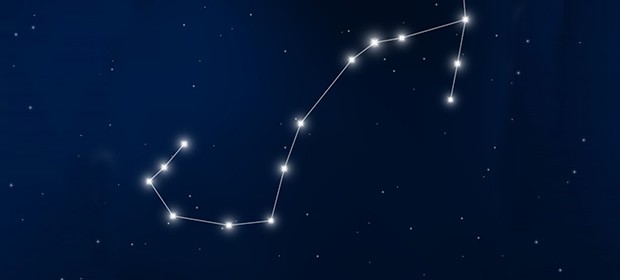The winter sky’s radiant Orion tops the list of the brightest and most spectacular constellations in the entire heavens, hands down. But a close runner-up lies opposite it in the summer sky and is at its best on July evenings after darkness falls. It’s Scorpius, gracefully astride the celestial meridian (the imaginary north-south line in the sky passing overhead) as you face south.
Often referred to as “The Orion of Summer,” Scorpius has only one bright first-magnitude star (Antares) compared to Orion’s two (Betelgeuse and Rigel) but has quite a few second-magnitude ones in a very distinctive pattern. Just as it’s easy to visualize Orion as a hunter with raised club, it also a snap to see a scorpion in its pattern with long curving tail and even a set of stingers at its tip! To encompass this and all of Scorpius in its glory, set your Scientifics Star and Planet Locator to about 9 p.m. for the middle of July. Being relatively close to the horizon, the bottom half of the scorpion’s tail and the stinger stars begin to set as the evening progresses.
Antares itself is a beautiful fiery red jewel, so named as being the rival of Mars in hue. Mars itself happens to be nearby (see below) for comparison right now. The star is a colossal red super-giant sun big enough to engulf all of the planets out to and including Mars if placed at the center of our solar system. Just as in the case of Orion’s red super-giant Betelgeuse, its outer atmosphere is “cool” enough that water vapor (steam!) can exist there. It’s flanked by two second-magnitude blue-white stars, forming a neat color-contrasting optical triple star as seen with both the unaided eye and in binoculars. Some observers compare this trio which is arranged roughly in a line to Orion’s famed three belt stars (but which are all blue-white in color and nearly equal in brightness).
Adding to the beauty of Scorpius this month are Saturn just above (north of) Antares and Mars to the right (west) of it. As if this weren’t enough, on July 15th the gibbous Moon will join the group, being place just above Saturn! Be sure to keep your eye on this area over the coming weeks, for as we will share in next month’s installment something exciting involving Mars will be happening in August you definitely won’t want to miss.
— James Mullaney
Former assistant editor at Sky & Telescope magazine & author of nine books on stargazing. His latest, Celebrating the Universe!, is available from HayHouse.com


